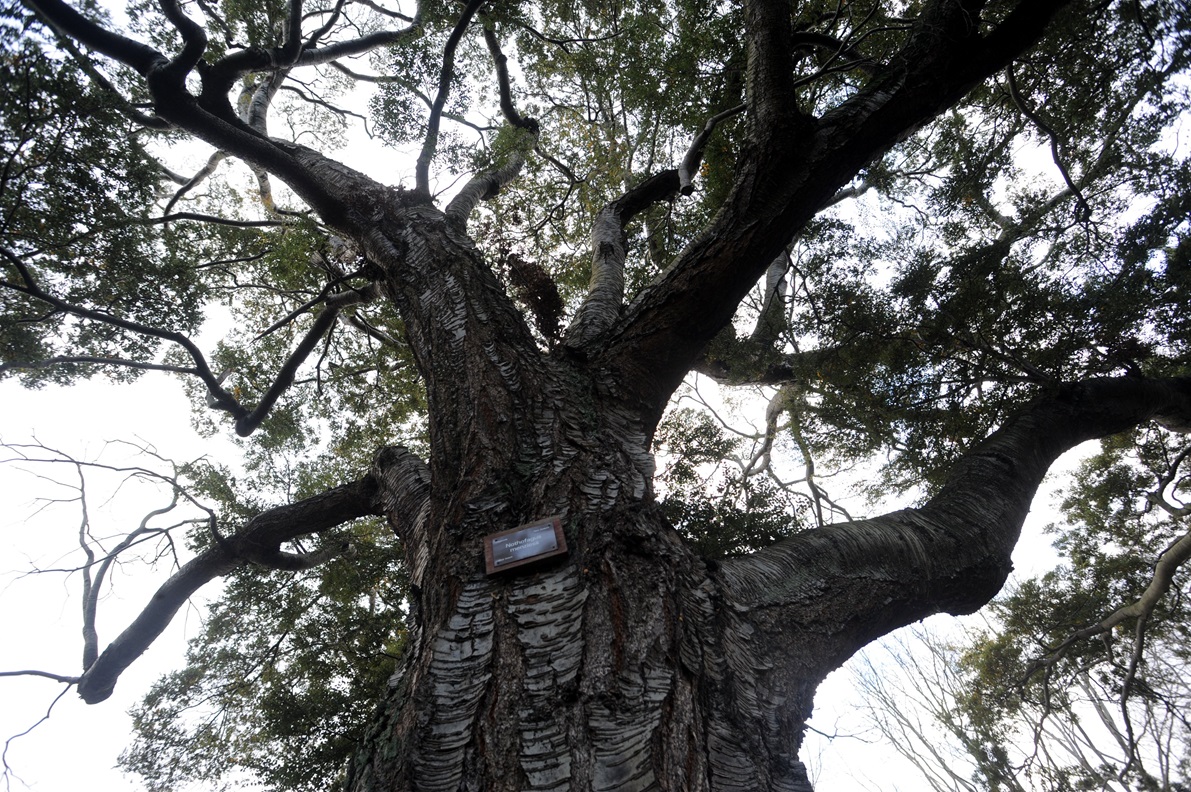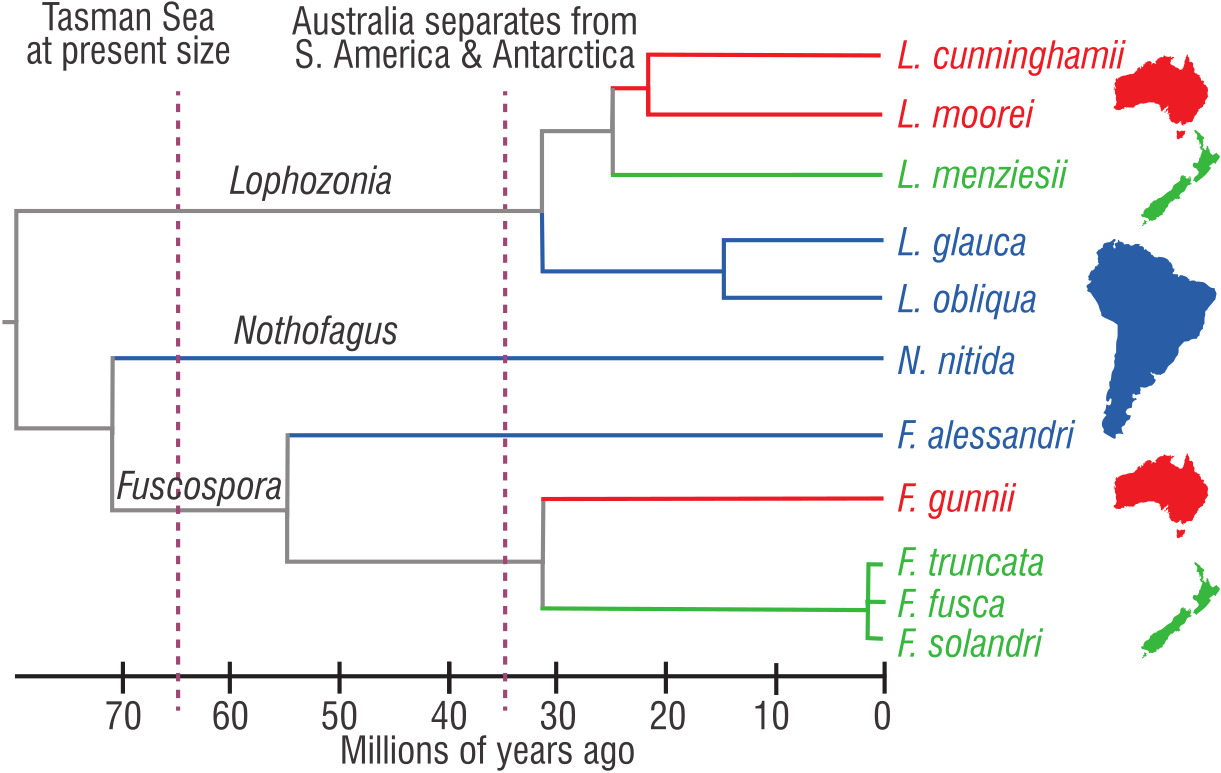
International travellers to Aotearoa New Zealand often comment about how far our country is from the rest of the world. However, it wasn’t always so, 180 million years ago we were part of Gondwana. Visitors from Australia, Antarctica, South America, Africa, Arabia and India could have gone overland to Zealandia on our one enormous supercontinent.

The breakup of Gondwana occurred over tens of millions of years. The theory of plate tectonics underlies this "continental drift". It is a slow journey. Tectonic plates move about as fast as fingernails grow.
Zealandia, which became present-day Aotearoa New Zealand and New Caledonia, began to separate from Australia about 85 million years ago. At that time, Australia remained connected to Antarctica, which in turn was still attached to South America. The Tasman Sea widened gradually, reaching its present size about 65 million years ago. Australia did not separate from Antarctica until about 35 million years ago.
These ancient geological events have played a key role in the evolution of our plants and animals. Terrestrial organisms that became isolated on the different pieces of continental crust evolved to be different from each other over evolutionary time.
Long-term isolation sets up a situation where related species live on the different remnants of Gondwana, separated by oceans. Scientists call this process of geographical separation and subsequent divergence "vicariance".
The alternative is "dispersal" — that somehow terrestrial organisms have flown, rafted, swum or otherwise found their way to new landmasses, unrelated to our geologic history. But how can we tell the difference? It’s in the genes.
One of the classical examples of a southern hemisphere "Gondwana distribution" are our southern beeches, the majestic forest trees that were, until recently, classified in the genus Nothofagus. Different species live in South America, New Guinea, Australia, New Caledonia and New Zealand.
Their fossil record extends back 80 million years, and there are even fossils known from Antarctica. Their seeds are intolerant of salt water, which seems to rule out long-distance dispersal across the oceans that now separate the different species. Southern beeches seem like a perfect example of vicariance.

And so, we now call the silver beech, Lophozonia menziesii, and place the remaining New Zealand tawhai species in Fuscospora: red beech, F. fusca; black beech, F. solandri; mountain beech F. cliffortioides and hard beech, F. truncata. Only silver, red and mountain beech grow naturally in Otago and Southland. Tahina/silver beech is the sole species native to the Dunedin area.
But genetics also shows that the evolution of these tree species is not as simple as we once thought. For instance, the close relationships of New Zealand and Australian species must be a consequence of transtasman dispersal, not vicariance. The evolutionary tree shown below summarises this genetic evidence.
Let me explain the reasoning. If the New Zealand and Australian lineages of Lophozonia had evolved vicariantly, their most recent common ancestor would have lived at least 85 million years ago. But the evolutionary tree shows this ancestor lived only about 27 million years ago, long after the Tasman Sea had formed. Our tahina/silver beech is not derived from some ancient ancestral species rafting for 100 million years on a drifting Zealandia.
Similarly, the New Zealand and Australian lines of Fuscospora separated just over 30 million years ago, again a date inconsistent with vicariance. Thus, the diversification within each of these beech genera is the result of a transtasman dispersal event.
Nevertheless, the tree also shows the result of a likely vicariant divergence. The separation of the progenitor of the South American F. alessandri from the Australasian lineages happened about 55 million years ago. This timing is earlier than the separation of Australia from South America and Antarctica, and so this branching of the tree was probably driven by tectonic events.
So, in short, perhaps like much of the real world, evolutionary history can be a little complicated. Southern beeches have evolved as a consequence of both vicariance and dispersal.
I have run out of room and yet I haven’t even told you about the wondrous mutually beneficial association these trees have with a group of fungi that live on their underground roots. What I can say, as I write this article, is that the silver beech/tahina right outside my window must have such fungi, as it has grown more than 8m in height since we planted it 30 years ago.
Hamish G. Spencer is Sesquicentennial Distinguished Professor in the Department of Zoology at the University of Otago













